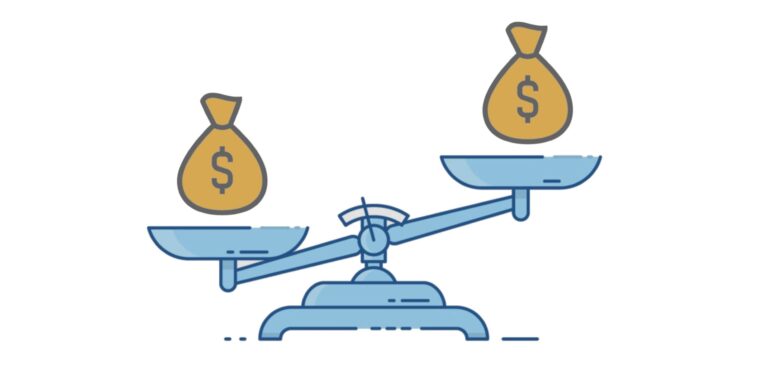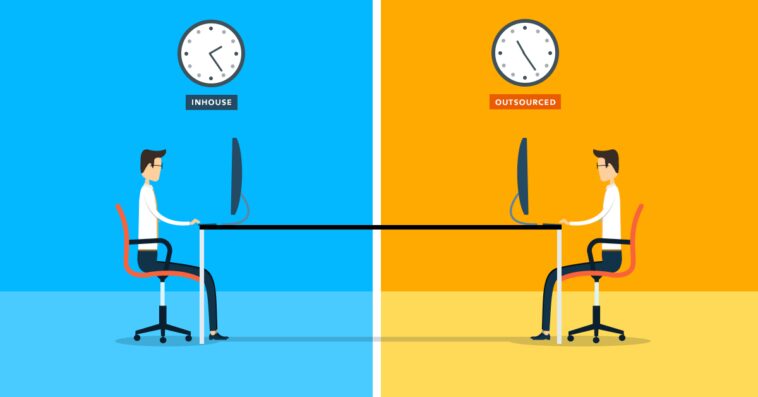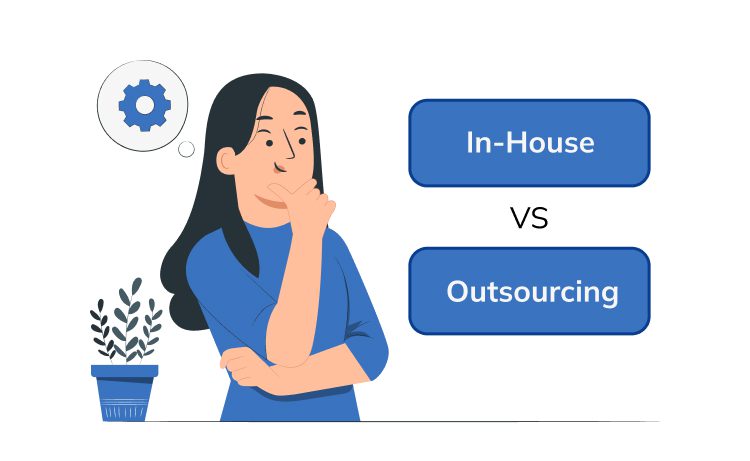Web design is the heartbeat of a successful online presence. Whether you’re a small business owner or part of a larger corporation, how you approach web design can significantly impact your budget and the final product.
There are two main paths you can take: hiring an in-house team or outsourcing the work. Each option comes with its own set of costs and considerations. Let’s explore both options and see what they might mean for your wallet in 2024.
The Basics of Web Design Costs

Web design costs vary based on complexity, functionality, and the level of customization you need. For those seeking budget-friendly options, you might consider exploring affordable web design packages that cater to various business needs. Here’s a quick look at the basic components that typically influence costs:
- Design Complexity: A simple brochure site will cost less than a complex e-commerce platform.
- Functionality: More features, like booking systems or customer portals, increase costs.
- Customization: Templates are cheaper, but custom designs provide a unique brand experience.
- Maintenance: Regular updates, bug fixes, and security patches are ongoing expenses.
In-House Web Design

The Upfront Costs
Hiring an in-house web design team can be quite the financial commitment. Here’s a breakdown of the typical costs involved:
- Salaries: A web designer’s salary varies widely based on experience and location. On average, you might pay anywhere from $50,000 to $90,000 per year. But that’s just for one designer. Complex projects often require multiple team members.
- Benefits: Health insurance, retirement plans, paid time off, and other benefits can add up to 30% to 50% of the salary.
- Training: Keeping your team’s skills sharp requires ongoing training and education, which isn’t cheap.
- Software and Tools: Subscriptions to design software (like Adobe Creative Cloud), development environments, and other tools can cost several thousand dollars annually.
Long-Term Costs
- Office Space: If your team works on-site, you’ll need to factor in office space costs.
- Hardware: High-performance computers, monitors, and other necessary hardware are significant initial expenses.
- Turnover: Staff turnover can be costly, involving recruitment, training new hires, and lost productivity.
Advantages of In-House Teams
- Control: Direct oversight of your team allows for more control over the design process.
- Consistency: An in-house team can maintain a consistent brand voice and aesthetic.
- Immediate Availability: Quick changes or updates can be made without waiting for an external contractor.
Challenges of In-House Teams
- Higher Costs: The overall costs can be much higher than outsourcing.
- Limited Expertise: Your team might lack expertise in specialized areas, requiring additional training or hires.
- Resource Constraints: Smaller teams might struggle to handle large or multiple projects simultaneously.
Outsourced Web Design

The Upfront Costs
Outsourcing web design can be more cost-effective, especially for smaller projects or businesses without the resources to support an in-house team. Here’s what you might expect:
- Project-Based Fees: Many web design agencies or freelancers charge on a per-project basis. Simple websites might cost anywhere from $1,000 to $10,000, while more complex sites could run $10,000 to $50,000 or more.
- Hourly Rates: Alternatively, some freelancers and agencies charge hourly rates ranging from $50 to $150 per hour.
Long-Term Costs
- Maintenance Contracts: Ongoing support and maintenance are typically available through retainers, which can be a few hundred to several thousand dollars per month.
- Updates and Revisions: While initial costs might be lower, frequent updates and revisions can add up over time.
Advantages of Outsourcing
- Cost-Effective: Typically lower overall costs compared to hiring an in-house team.
- Expertise: Access to a wide range of specialists without needing to hire each one individually.
- Flexibility: Ability to scale up or down based on project needs without long-term commitments.
Challenges of Outsourcing
- Less Control: Limited direct oversight can lead to miscommunications and delays.
- Inconsistency: Different freelancers or agencies might produce varying results in terms of quality and style.
- Security Concerns: Sharing sensitive information with external parties always carries some risk.
Comparing Costs: In-House vs. Outsourced

To give you a clearer picture, let’s compare the annual costs of maintaining an in-house team versus outsourcing:
In-House Team Costs (Approximate)
- Salaries (3 team members): $150,000 – $270,000
- Benefits: $45,000 – $135,000
- Training: $5,000 – $10,000
- Software and Tools: $5,000 – $10,000
- Hardware: $6,000 – $12,000
- Office Space: $12,000 – $24,000
Total Annual Costs: $223,000 – $461,000
Outsourced Costs (Approximate)
- Initial Design Project: $10,000 – $50,000
- Ongoing Maintenance (Retainer): $5,000 – $60,000
- Updates and Revisions: $2,000 – $10,000
Total Annual Costs: $17,000 – $120,000
Making the Right Choice
When it comes to deciding between an in-house team and outsourcing, there’s no one-size-fits-all solution. It really depends on your unique circumstances – your specific needs, your budget constraints, and where you see your business heading in the long run.
The best way to approach this is to ask yourself a few key questions. What are your core requirements? What kind of expertise and capabilities do you need? How much flexibility do you require?
And importantly, what resources can you realistically commit? Answering these questions honestly will help point you in the right direction. Here are a few questions to help guide your decision:
- What is your budget? If you’re on a tight budget, outsourcing might be the more viable option.
- How complex is your project? For highly complex or ongoing projects, an in-house team might offer better value in the long run.
- Do you need control and consistency? If maintaining a consistent brand and having direct control are priorities, an in-house team could be the way to go.
- How quickly do you need the project done? Outsourcing can often get projects done faster due to the availability of resources.
Final Thoughts

Deciding between in-house and outsourced web design isn’t a one-size-fits-all situation. Each approach has its own advantages and challenges. By considering your budget, project complexity, and need for control, you can make a choice that best suits your business. Web design is a critical investment, and making the right decision can pave the way for your online success in 2024 and beyond.
Balancing cost with quality and control is the key. Whether you choose to build an in-house team or outsource your web design needs, ensure the path you take aligns with your overall business strategy and goals.





